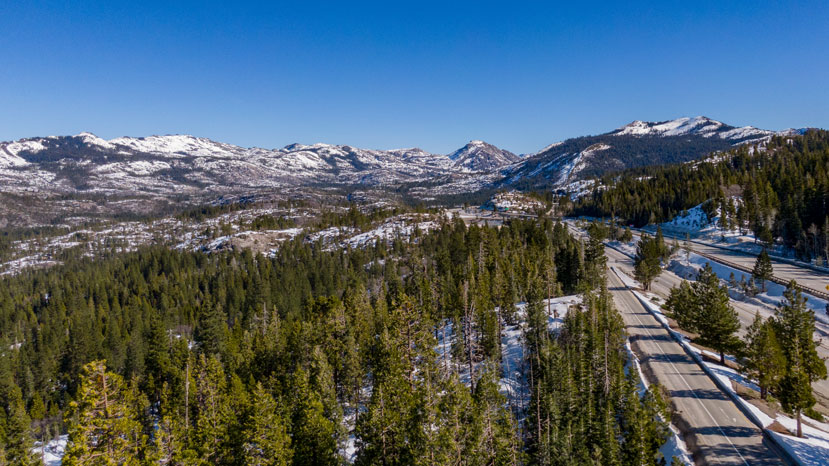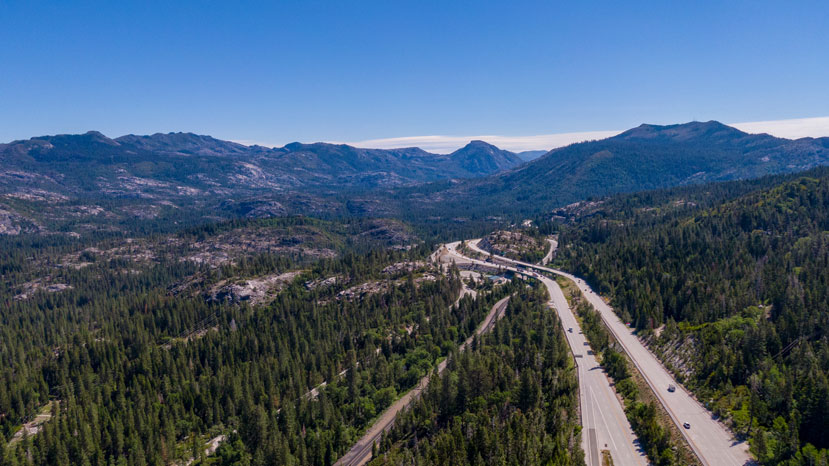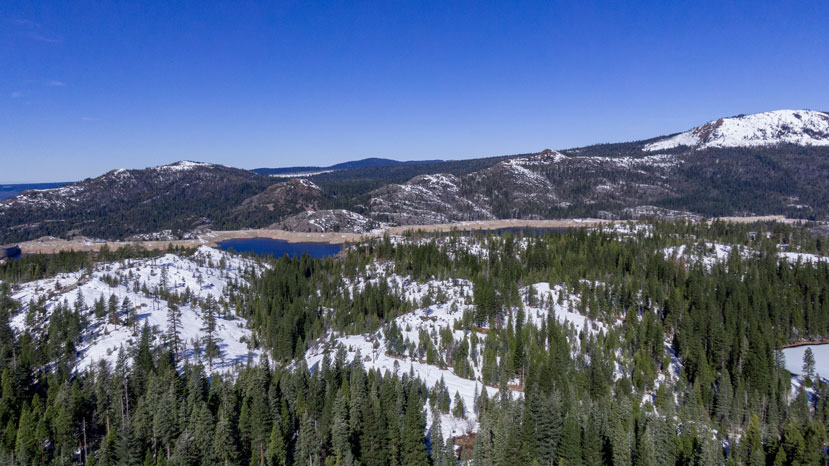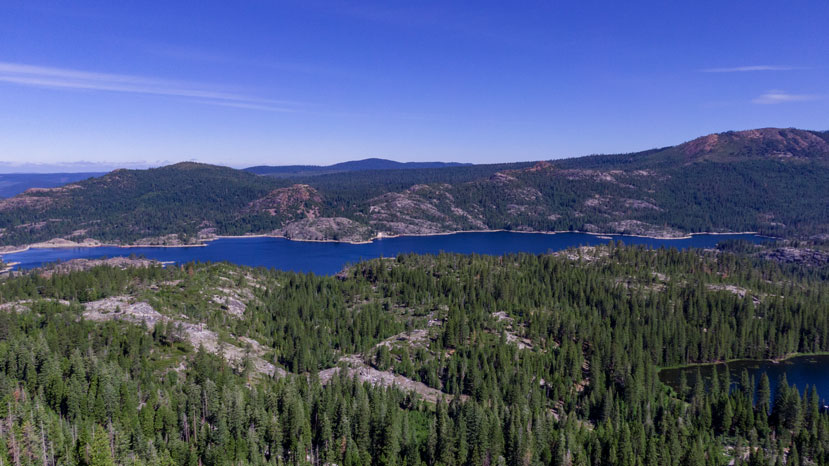California’s Sierra Nevada watersheds key for climate resilience
The Sierra Nevada Conservancy’s service area provides water to more than 75 percent of Californians and vast swathes of Central Valley farmland. Much of this water supply falls as snow across the high-elevation landscapes of California’s Sierra Nevada and Cascade mountains where it is stored as snowpack through the winter and spring. As the heat of summer arrives, snowmelt makes its way into reservoirs where it can be allocated throughout the state during the dry season.
The majority of California’s engineered water system relies on the upper watersheds’ natural infrastructure that captures and stores precipitation. Managing these landscapes to maximize spring snowpack accumulation complements water conservation efforts and will be increasingly important as our climate continues to warm.
Snowpack conditions for 2021–22
The water year got off to a promising start with heavy October rains followed by December storms that built an early season snowpack 160 percent of average by the end of 2021. Unfortunately, as noted by Governor Newsom in his March 28 drought emergency executive order, the new year began with “the driest January and February in recorded history for the watersheds that provide much of California’s water supply.”
As a result, April snow depths, when snowpack is typically near its deepest, were a scant 38 percent of average.
Images taken near Yuba Pass on February 2, 2022, and June 17, 2022, illustrate the degree of snowpack melt during the first half of the year:
Low spring snowpack raises fire and other risks for California forests
Worsening drought conditions are expected to exacerbate regional wildfire and forest health crises. The National Interagency Fire Center has predicted that California’s potential for wildfires will increase to higher than normal in 2022 due to low snowpack and precipitation combined with high temperatures. CAL FIRE’s 2022 outlook is similarly grim, forecasting lower than average fuel moisture levels leading to an increase in wildland fire activity.
Drought also makes trees more susceptible to mortality from other sources, like bark beetles, a combination that led to severe tree mortality (at least 35 per acre) across much of the Sierra Nevada south of Lake Tahoe between 2014 and 2018.
Restoring fire and drought-resilient ecosystems
Restoring health to the Sierra Nevada’s forested landscapes is a nature-based solution to challenges like drought and wildfire that are made worse by climate change. Forests that are less crowded are not only less likely to burn in dangerous and damaging ways, but are more resilient to drought, and can even allow a deeper snowpack to develop. Mountain meadows, characterized by meandering streams and floodplains, act like sponges, soaking up snowmelt, filtering it, and releasing it slowly—extending runoff longer into the dry California summer.
These efforts can complement water conservation and other state efforts to make the most of California’s water resources.
While restoration will look a little different on every acre of the Sierra Nevada, the success of the SNC-supported Caples Creek Watershed Ecological Restoration Project in standing up to the Caldor Fire is an excellent example of how we can achieve water supply and fire risk reduction goals as we restore healthy ecosystems.
Residents urged to Save our Water
As the extreme drought intensifies, the state is preparing for the possibility of a fourth dry year. California must once again focus on making the most of our limited water supplies. The state has a California Water Watch dashboard that tracks the current state of the drought and has launched a separate campaign with tips for how everyone can help to Save Our Water by using it wisely. We must all do our part to save water now for our families, our communities, and the California way of life which depend on a secure water future.




